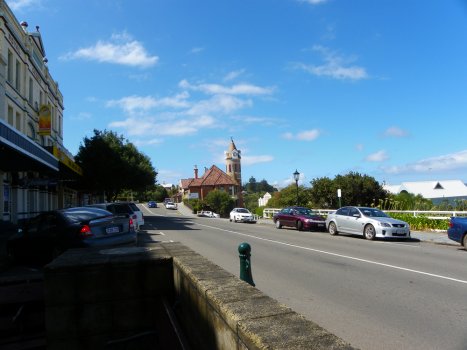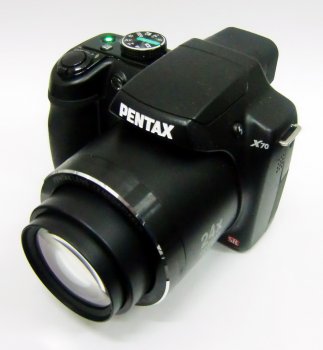 With the reputation Pentax holds with its K-Series of DSLRs, I was more than intrigued to get my hands on the Pentax X70 and its ‘ultra zoom’ capabilities. This 12 megapixel, 24x optical zoom yet surprisingly lightweight beauty seemed to provide an ideal solution for someone in my position – a bridge between the compact digital camera and the DSLR.
With the reputation Pentax holds with its K-Series of DSLRs, I was more than intrigued to get my hands on the Pentax X70 and its ‘ultra zoom’ capabilities. This 12 megapixel, 24x optical zoom yet surprisingly lightweight beauty seemed to provide an ideal solution for someone in my position – a bridge between the compact digital camera and the DSLR.
Being someone that has always taken a liking to photography but have never had the time to break into the DSLR market, this review has been written for those like me – people that are ready to move up from a compact digital camera but may not have the skills or funds for a DSLR.
So how did this camera go?
First Impressions
The first thing that strikes you when you pick up this camera is the size and weight. While the design mirrors a small digital SLR, the decision to include a rechargeable lithium ion battery rather than the traditional 4x AAs leaves you with a camera weighing only 408g (with battery).
The camera itself feels quite solid, with a large rubber handgrip on the right which enables you to easily wrap 3 fingers around and a thumb grip on the rear. The neck strap doesn’t seem to be adjustable, but sits at about my belly button comfortably.
The lens feels slightly wobbly (especially when the zoom is extended) and I don’t think it would handle any impact without damage. For this reason, I’d recommend using the neck strap and lens cover at all times.
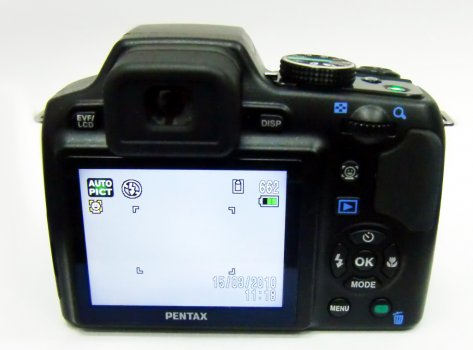 Controls
Controls
The back of the camera features a 2.7 inch LCD screen. Above the screen are the EVF (electronic view finder)/ LCD button, to toggle between the display and the viewfinder and display button to change the information on the display. To the right of the screen from top to bottom you have:
– E-Dial
– Smile button for controlling smile capture and face recognition functions
– Play button for previewing images
– 4 Way controller
– OK button,
– Menu Button
– “Green”/ delete button
Getting Started
The initial setup was very simple and uneventful. Charging and installing the battery, attaching the strap and lens cap, and sorting out the time and date settings is easy to work out, but for those that like being doubly-sure there is a good description in the quick guide manual and the operating manual.
Contents of the Box
– Camera
– Neck Strap
– Lens Cap
– CD-ROM Software
– USB cable (which is unfortunately not a mini USB)
– AV cable
– Rechargeable lithium-ion battery
– Battery Charger with AC plug cord
– Manuals: Quick Guide/ Operating Manual
(note: internal memory is only 33.6MB and no SD card included)
The manual can look a little scary on first glance – it is nearly 300 pages (all of which in english!) but is extremely comprehensive and easy to understand. It not only goes into how to change shutter speeds and apertures, etc. but provides a description of each and the consequences of using them – very useful for the amateur photographer.
Point and Shoot – Automatic Setting
Timing and Lag
One thing that was immediately clear with the x70 was the amount of time to point and shoot with auto focus being tediously slow at approximately 3 seconds and even slower in bright conditions. This is fine for shooting stationary objects however it results in missing some of the action when shooting dynamic objects or sports. The camera offers three rates of continuous shooting ranging from 4fps to 11fps with a maximum of 21 pictures which would be great but there is no full resolution continuous shooting mode instead being fixed at 5mp.
Auto Focus
– Standard: Will be suitable for most of your general, everyday shots. Used when you’re shooting a subject 40cms away or more. When you depress the shutter button halfway, the area that is being focused upon will appear in a square.
– Macro: used when you are shooting a subject 10 cm – 50 cm away. Like standard, the area to be focused upon will appear in a square when the shutter button is pressed halfway.
– 1cm Macro: as the name suggests, this is used when shooting subjects approximately 1 cm away.
– Infinity: Used for taking photos of distant objects. Can only be used when the flash is off
– Manual
– AF Area Selection: With this mode, you can select one of 25 points on a grid to focus on.
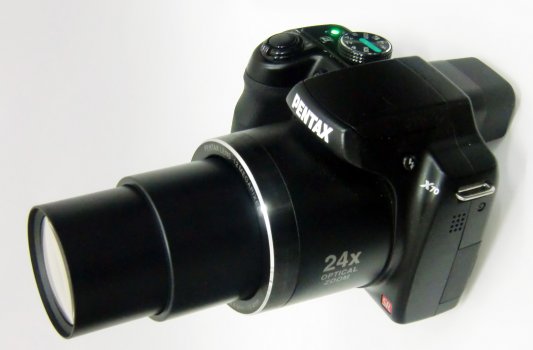 Lens and Zoom
Lens and Zoom
This is the exciting bit! So we know it has a 24x optical zoom, but what is the quality like? And how far is that really? For the sample images I have provided below, I would recommend clicking on each image to expand – you will need to with the zoomed out image to see where the zoomed in image came from! The zoomed in photo has been taken from the exact same location as the zoomed out one.
|
|
 |
 |
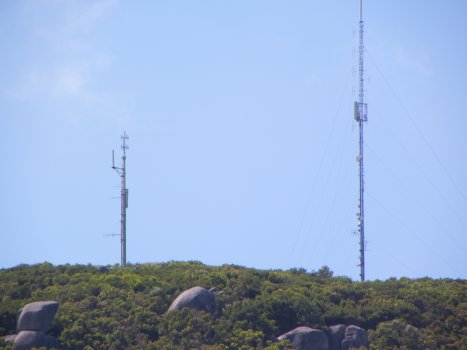 |
 |
 |
As you can see from the above photos – the zoom is quite impressive! The above photos were all taken from the same day from the Albany city foreshore, with the camera set to Landscape and with digital zoom disabled to show full optical zoom capabilities. The images have not been altered or photoshopped in any way!
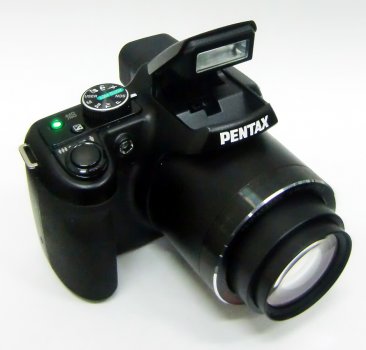 Flash
Flash
As you may have noticed from the photos, the camera features a pop up flash. This can be annoying if you’re trying to quickly turn on the camera and capture an image, but it does have its benefits. Having the flash further away from the lens decreases potential for red eye, and it is also out of the way from roaming fingers that have ruined too many of my happy snaps!
Image stabilisation
The image stabilisation or shake reduction function can be activated quickly and easily through the menu options or via the mode dial. It is adequate to assist in reducing blurring especially at higher zoom lengths.
Battery
This seems to be one of the biggest downfalls of this camera. According to specifications, you can capture approximately 170 photos assuming you are using the flash on 50% of the images. When testing this camera myself, I took 114 photos and found that battery was nearly drained. However, this also included a fair amount of standby time and playing around with menus and settings, so with general use I’d assume the amount would be close to the specifications. If you were to purchase this camera, I would recommend buying an additional battery to have on hand!
Image Quality
I’m not going to go into huge detail about the exposure and white balance, etc. To be honest, I’m more than happy with the photos the camera is capable of taking using the automatic settings. However I have had a good play around with the different settings such as image tones, white balance presets, etc. and these would be quite useful if you have the time to sit there and fiddle around a bit when taking a photo.
Other
There are a few things that i have noticed with this camera that should be mentioned:
– Compression when saving images to memory card poor: this will result in a slightly fuzzy and distorted image when zoomed in.
– Low quality continuous shooting mode images
– Panorama: can be hard to line-up images if no high contrast landmarks
– LCD screen isn’t glary so we were able to use it outdoor s in bright conditions with no problems
Summary
The more I use this camera, the more I love it. If you are looking for a camera that you can pick up and within a couple of hours be taking incredible images- this is the camera for you. It will take a bit of fiddling and playing around with – but the results are worth it.
The Pentax X70 is available now through Leederville Camera House & Duty Free and other leading camera retailers for around $600.
For those that are interested in seeing more sample photos taken with this camera, please click here
| Pros | Cons |
| – Great optical zoom – Comfortable weight – Shake reduction effective and makes taking photos easier – Preset modes very easy to use and produce good photos – Macro shots very easy to focus and look great – Takes SD and SDHC (very cheap easy to source) – Price |
– No full resolution continuous shooting – Can be slow to focus when taking automatic point and shoot photos – Bit too bulky to carry around for a primary camera |


